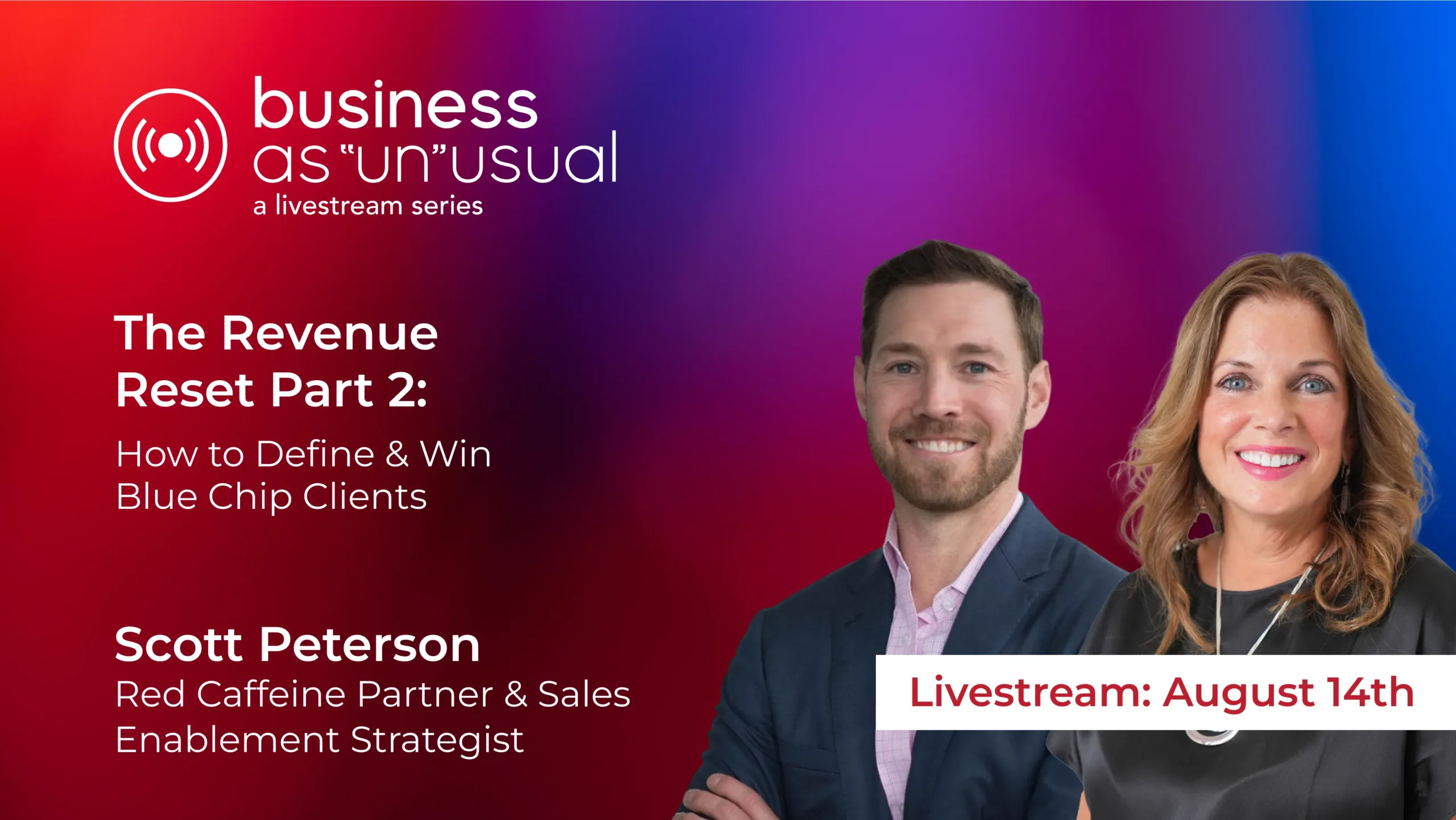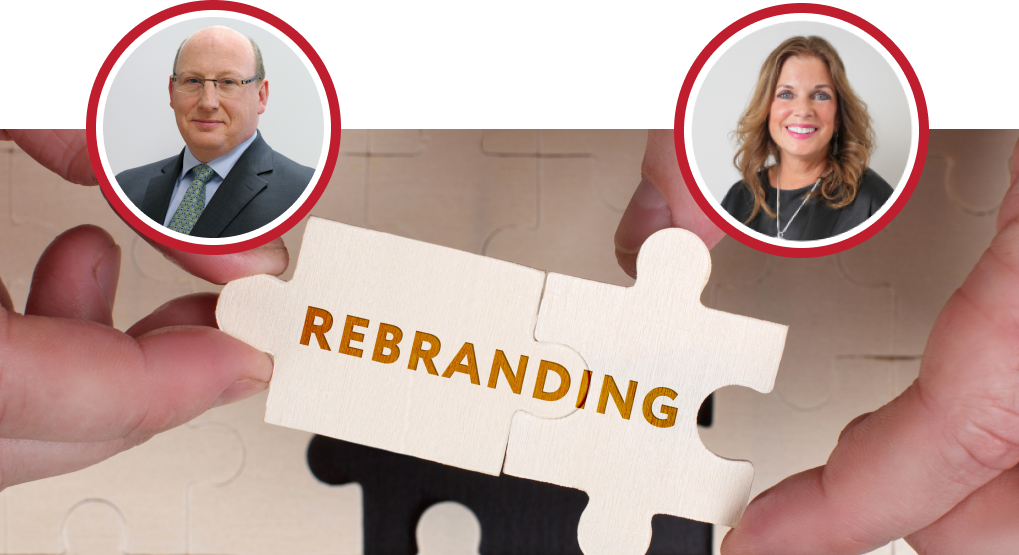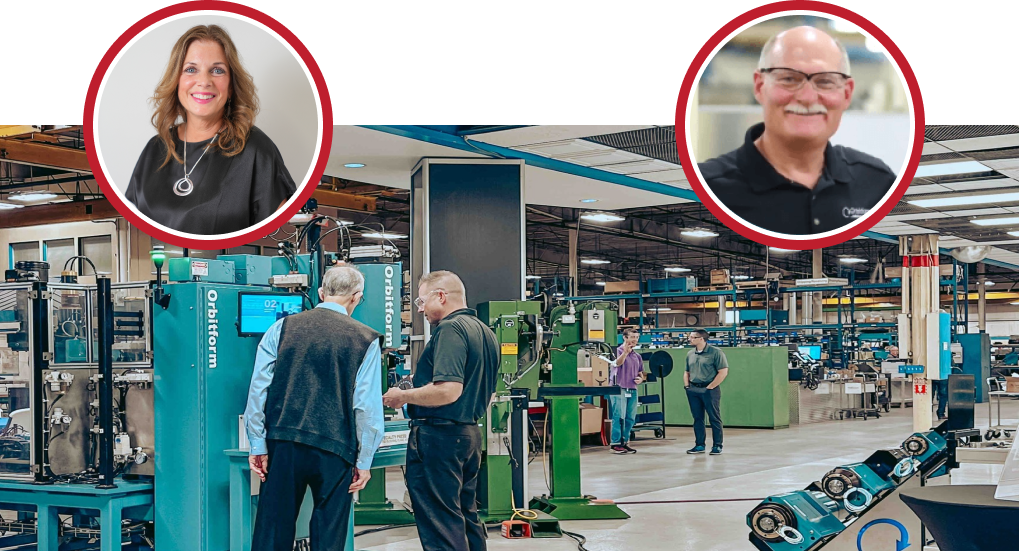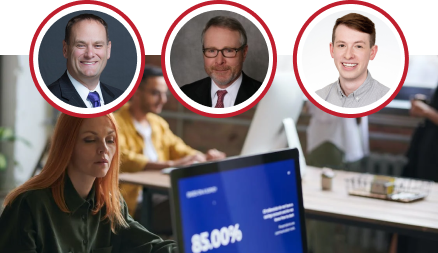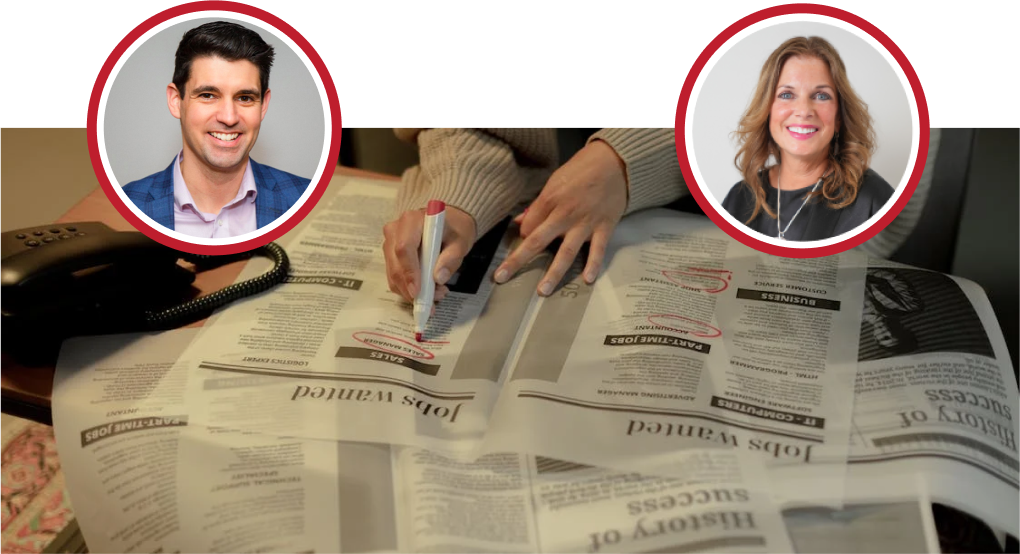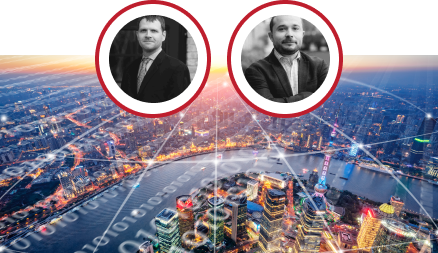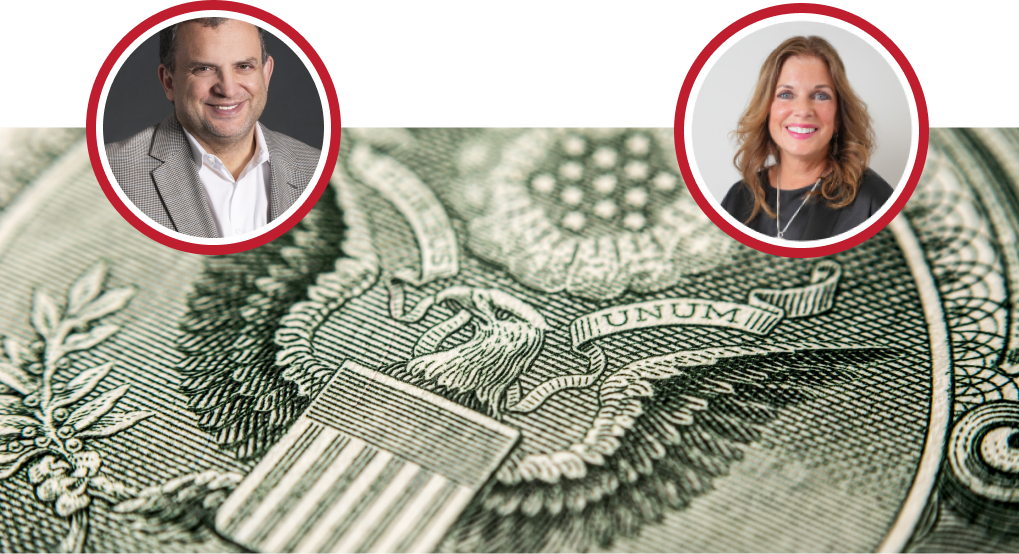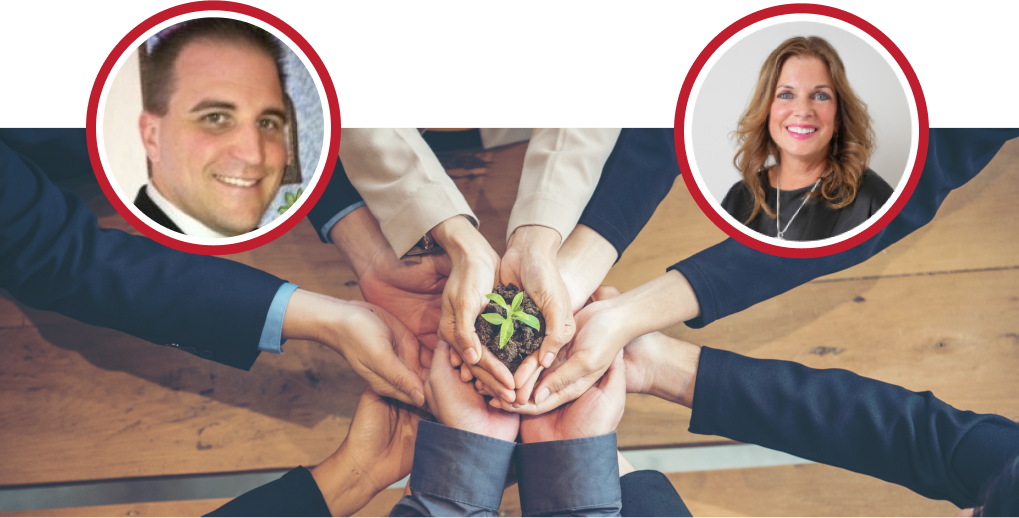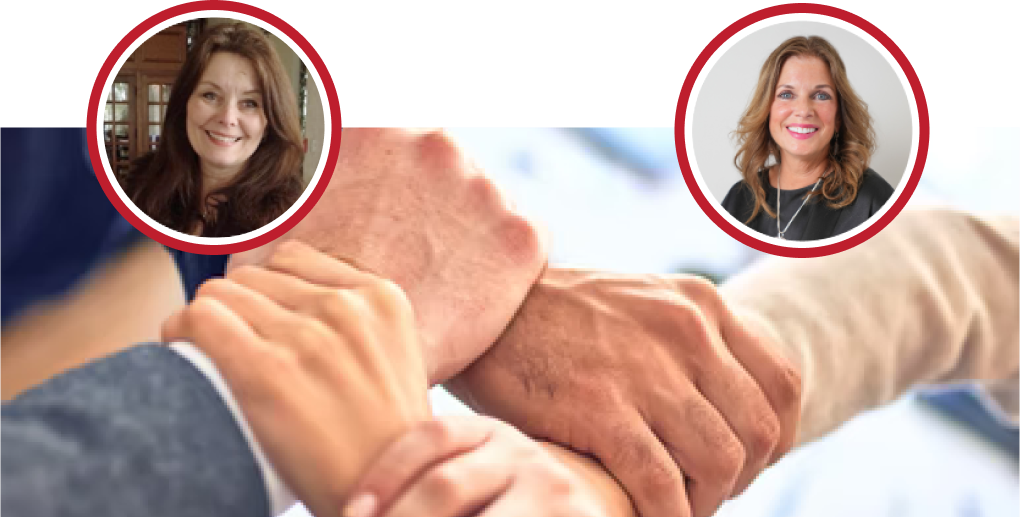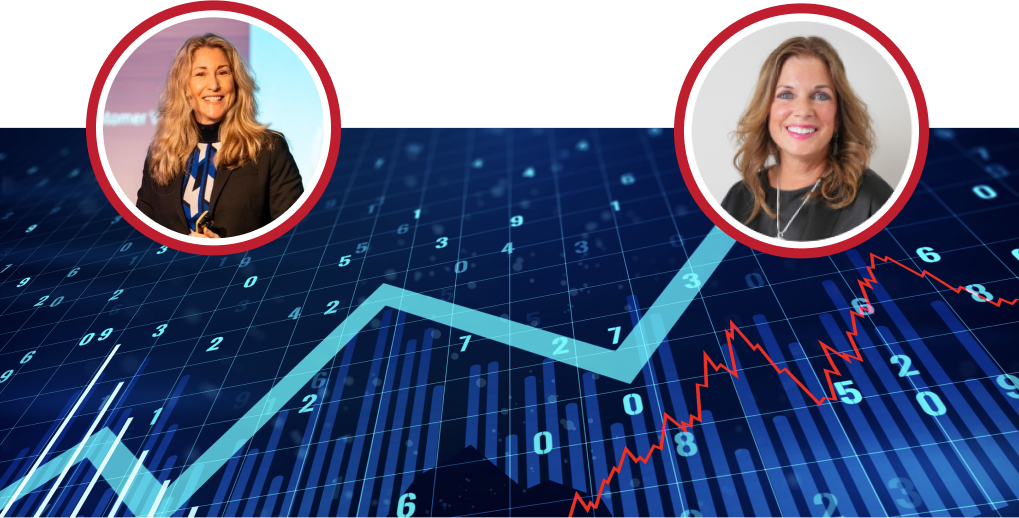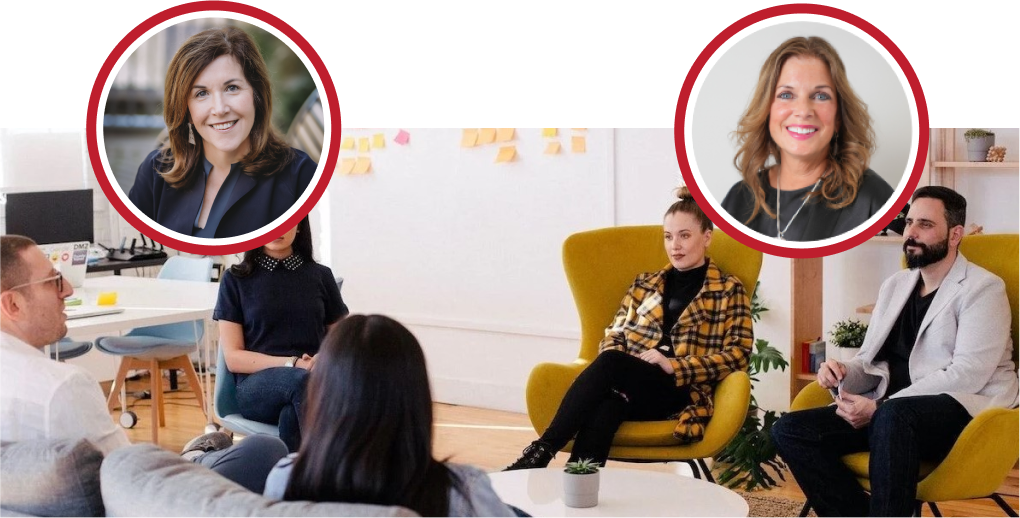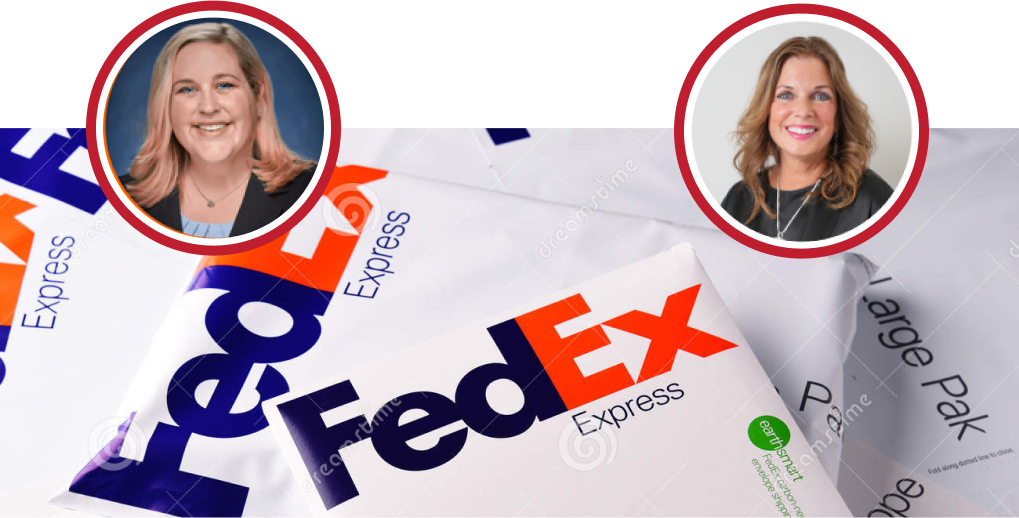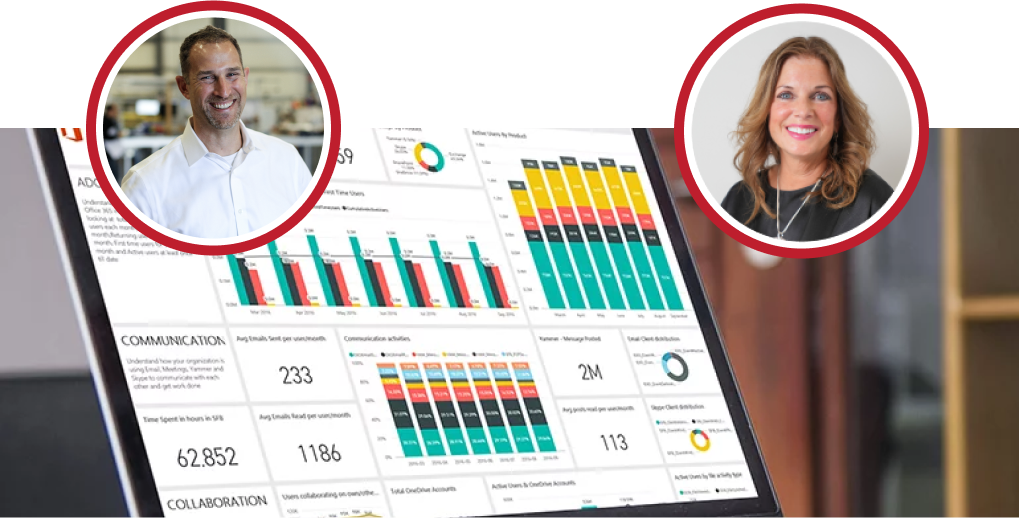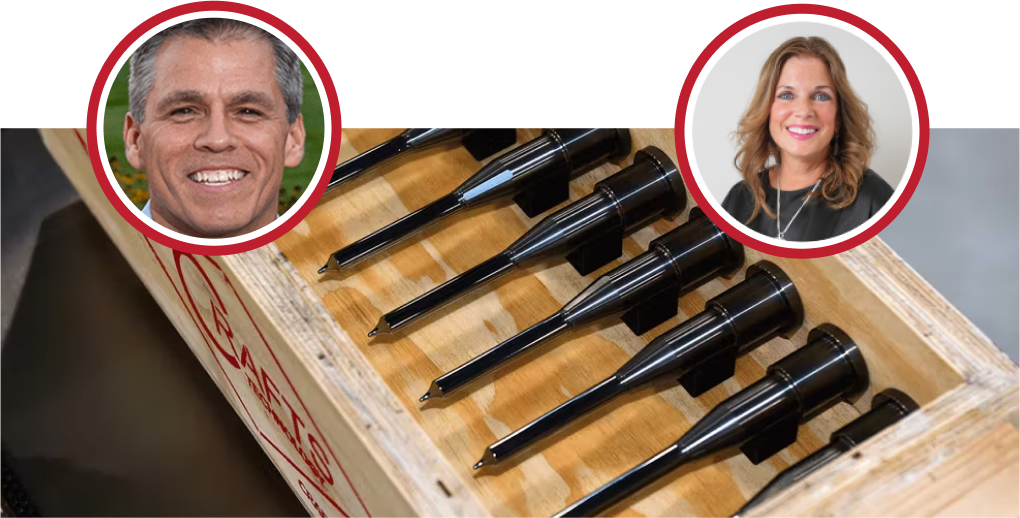Kathy: Welcome to business as unusual. We’re going to. Get started in just a few minutes, so if you have any questions, please feel free to add them to the chat, and I’ll try to get to all of them during our session. We’ve got a jam-packed session today, so please keep them coming in early and often. I’m Kathy Steele, the CEO of Red Caffeine and your host today. For those of you unfamiliar with red caffeine work growth consultancy, we build and execute grow-to-market plans. For ambitious mid-market companies, our service offering includes A fractional team led by a senior-level marketing lever leader that enables a business to scale rapidly without hiring a wide range of full-time staff members to move a growth plan forward. And today we’re going to talk about mastering modern HR. And navigating the changing labor market, which? It is an important growth. Lane for us. So, in this ever-evolving world of business, the role of the human Resources Department has transformed dramatically. As we were talking about as we were prepping for this, gone are the days when HR was merely about hiring and firing. Today, it’s about building a brand, fostering a culture, and ensuring that organizations attract the right talent. And nurture and retain them. So central to this transformation is the concept of employment branding, and it’s the heartbeat of our company’s culture, values, and vision. But how do we tie that into the broader, broader spectrum of modern HR practices? So today, on Business as Unusual, we’re going to dive into what is the modern makeup of the HR department. How have these roles and responsibilities evolved and shifted, and what does it take to find the right individual or team to fulfil the dynamic needs of today’s business? We’re also going to talk about outsourcing as the popularity of fractional resources surges, especially during leaner economic periods. We’ll explore the benefits and challenges of leveraging these part-time specialized talents for HR functions. When should companies tap into external expertise, and when is it more strategic? To rely on in-house capability. We’re also going to dive into cultivating our harmonious workplace culture. We’ll talk about understanding the strategies companies can employ to create a workplace environment that resonates with both recruits and seasoned professionals. And then how can organizations ensure that their culture is inclusive? Progressive and aligned with its employment. So, whether you’re an HR professional or a business leader, it’s crucial to Growth to elevate our talent plans. Our people are truly the backbone of our businesses. So, we’re fortunate to have two incredible thought leaders join us at BU today. Our guest, Sandra Teague, who’s the director of Human Capital Management, is at RSM and in her current role. Sandra is uniquely positioned to guide employers in improving their human capital strategy by utilizing HR, outsourcing, and other HR consulting services. And fan favorite Mary Lynn Sayumi, my co-host today, she’s president and CEO of the HR source, and they’re a Chicago-based employers association with over 1200 members organizations. She knows a thing or two about HR operations as well, so I’m going to start today’s question. With an icebreaker for Sandra. Really thrilled to have it. You today on BYU, could you? Share something about yourself that is not on your bio.
Sandra: Well, thank you, Kathy. First, for having me, I’m thrilled to be here and talk about this, you know, to talk about this topic. So, I think what’s you know, and it my stage of life, I’m relishing my empty nested Ness. So, I am looking forward to or have completed some recent big trips and travel abroad and am looking forward to more of that in the future. And as Mary Lynn and I were talking, you know, planning children’s weddings and things like that, and kind of funny to call them children, right? Because I guess they’re not anymore, but. So yeah, fun. Stuff in my life is going on in addition to my professional world.
Kathy: Well, Marilyn and I are both travel fanatics. So, share that passion with you. All right, Mary Lynn, you want. To kick us off today.
Mary: So what? For a few years, we’ve had Sandra. So, you know we’ve. Both have been long. In the HR world, the HR trenches. But what we have been through. During the pandemic and since the pandemic, it has really changed the playing field as well. The expectation talks to us a little bit about what you see currently in terms of those changes and how that evolution has changed, what organizations need to be looking for as they’re determining their HR deliverables, and how to manage and lead their HR efforts. It’s such an interesting topic currently.
Sandra: Absolutely. And you know. I’ll give you one word in. Response to that and that is complex like I. Think that what’s? Driven by the pandemic, there was just obviously a sea change in the HR world. A sea change in the workplace. And it’s just made it a lot more complex, and that complexity that used to perhaps only exist in very large organizations. Has trickled down to the smallest of the small organizations. You know, I talked to employers all the Time who might have just a handful of employees, and they’re fake. They could have. Five, right? And they’re facing complexities due in part to the diverse geographic workplace. Right. So, the pandemic drove people to not only work from home but often to work from wherever. So, when you have employees with people everywhere, it can be not easy to stay ahead of the complexities associated with that. You know, a couple of things that come to mind are, you know, state labor laws. I think a lot of people don’t realize that you know, we’re a regulated state here. In Illinois and Chicago, I think employers here will, you know, accept that. But I think what sometimes employers don’t realize is how different. Things can be in other states, and sometimes even in other municipalities and other jurisdictions, so HR departments have to investigate those things, educate themselves about those things, and learn about those things again if you have a large HR team, internally large corporation, maybe that’s a little easier to deal with when you have a smaller organization that you know that becomes very challenging. So complex.
Mary: Couldn’t be more it is. So complex, and while during the pandemic, many organizations kind of turn the other cheek or put their head in the sand and say people can work from anywhere, we’re not. Going to really deal with it. Making sure of that. We’re set up as legal business entities in various states, but then as Time went on, they started realizing, you know, if someone leaves the organization and wants to file unemployment. You can get yourself into trouble if your organization has not gone through the necessary steps, so I think some organizations are still catching up and trying to figure out where their employees are, as well as determining if they need policies in place to help. You know, regulate or set guardrails around where there are. Willing to employ individuals.
Sandra: Yep, yep. And I think, you know, two other areas come to mind also, or specific areas come to mind. One is in terms of mandated leaves, mandated leaves of absence, whether paid or unpaid, that various states are imposing that ties back to the company’s internal policies. What are those things that need to be documented but you need to be adhering to? The state rules, so that’s it. One thing, the second thing that pops to mind. It is a lot of the. Pay transparency rules that are coming into play. So, you’ve got, you know, rules that states are basically saying, hey, if you’re going to post an open position for an employee in. Our state, you.
Need to communicate with the potential. The range is the pay range for that. You know that is a big yeah. A lot of employers are having a very difficult time stomaching that, you know, especially smaller employers who maybe don’t have very rigid compensation. Structures, they say? Well, wait a minute, I don’t. You know, I’m going to pay somebody. I want to pay somebody. So now they’re being forced to potentially say, well, OK, we for this position, we will pay between, you know, $70,000 a year and $90,000 a year, and employees, a lot of employers don’t like that. So, again, you have to know what the rules are in the states where you’re recruiting or where you could potentially have somebody apply from and if you advertise a position as fully remote. You could have. Somebody applying from California, from Colorado, from Illinois. From New York, from. Wherever and so you need to be adhering to those, you know, to those various rules. So, it’s tricky. It’s very tricky.
Mary: It’s very tricky.
Kathy: So, you know, I love that you started out talking about how complex it has gotten, because I think at the, you know, the beginning of the session. I talked about it. As you know, the expectations of an HR team have changed over the last few years. Years. Can you talk? About some of the skill sets required. In your HR department. Now, that might not have been. Things that we really considered in terms of staffing and HR teams in the past.
Sandra: Yeah. So, I think that the complexity has driven the need to better utilize technology to manage this data, right? And to know what information you have about employees and to manage it well. So, I think that in terms of the skill set for an HR department, that’s been elevated. A little bit. I think the other, you know, with the remote, you know, so many employees being remote, the being able to focus on employee engagement and come up with programs that can keep, you know, help managers and supervisors basically help teams. Being better engaged is another skill set, so these are very diverse skill sets, and that’s part of what, again, makes it. This is so complex. You have data-driven needs, and on one side, you have employee relations and the kind of human you know needs. On the other hand, finding individuals that. That can address all of those skill sets at 1:00. Time is very difficult. You know this might. Be just for a for a minute. This might be a good time to. Pop up the slide of the employee life cycle that I know I shared previously just to get it. It’ll just kind of overwhelm me. You’re right, there’s. A lot of words. On this slide, I guess what I just wanted to point out is that there are so many components. Of the employee life cycle and, therefore, of what HR needs to do. Managed, so the way this slide works here is, you know, up at the top on the right. That’s kind of where it starts. So that’s where you’re going out to market and you’re attracted, you’re trying to attract people into your organization. So, Kathy, I know you know from an employer branding perspective that’s probably near and dear to your heart. Then we go into actually recruiting and selecting individuals. And then bringing them on board, that’s a big technology touch point right now is how do we ensure that employees get a good onboarding experience that we’re not giving them a stack of paper and saying, hey, fill this out because if they’re in a different state, you can’t even do that anymore, right? So that’s definitely an area where technology is kind of emerging in a much bigger way. Training and development are back to the complexity thing. Back to regulations, many states are now requiring employers to train. Their employees on sexual harassment prevention. You know again. Before, maybe you could just, you know, do a short presentation internally or hand out some papers or have somebody sign a policy. But now you’ve got to have an hour long, 2 hours long, whatever the state is dictating interactive training program covering. Points, so it’s very important. So, a lot of employers are, excuse me, seeking out learn management systems, which are basically portals through which you can host a wide variety of training sessions on behalf of your employees. So again, that used to be only.
In the realm of large corporations, but that has trickled down also to the smallest of the. Small employers because. States are mandating that certain training be. Done for everybody. Then you come around to the engagement piece engaging and performing, you know, managing performance. So, not only engaging the employees and making sure they feel part of the team if they’re working remotely, but also evaluating their performance, right? How do you measure other than by walking around and seeing if people are at their deaths? They are at theirs. Desk, how are you measuring the outputs? Of what somebody is is doing day in and day out, rewarding and retaining that speaks to the compensation piece. Again, back to the whole recruiting and the ranges of which you’re willing to offer compensation and then separating, you know, the moving individuals properly out of an organization should they choose to leave or should they no longer be. And fit. So just wanted to share this. We don’t really need to keep this up here but certainly talk about it. But you know. There’s just. So much is involved throughout the entire life cycle, and there are individuals in the HR field that. Focus on one of these bullet points, and you know. Others are generalists that need to touch many, if not all of these, especially within a smaller, smaller organization, and maybe just to explain what I mean by smaller, when I say small, I would say an employer should say under 100. Employees, those, those employers. Those that size. I consider them smaller. Every kind of has a different, different, different definition of that. So just thought. I’d mention that.
Kathy: Yeah, I know it like it. Sometimes we break it down a little differently, whether we’re talking about revenue size or headcount size and I, you know, I agree, I think it’s even a few years ago the idea of having. One resource that could really manage the full ecosystem of the employment experience, you know the requirements of today’s HR department is so diverse, I mean. I don’t know any unicorns that can really perform all these skill sets in our, you know, in a really high at a high level like you, you really required in today’s, you know, human capital strategies.
Mary: And if people are still scratching their heads as you. Know what HR. Have on their plate. If that visual doesn’t just. Right, there is. So many challenges as well as opportunities in each of those categories, right. And to Kathy’s point, many of them take really unique skill sets for small organizations. And we often also define small as under 100 employees. A vast majority of HR sources members are in that small category. They do not have the in-house expertise to stay on top of. All of those areas in any given period. So, as we look at 2024 and all of those different areas, Sandra, how do you see organizations prioritizing kind of some of the top issues that are coming at us? You know how, how are you? Responding to and helping organizations determine where to put their resources and what things to be most concerned about. About when that because you can get fairly overwhelmed by looking at that list and digging. Where the heck do I start? And you read the debt headlines day in and day out, and you know, they don’t necessarily give you great comfort that the. The road is going. To be smooth. And easy ahead right when I. Read the statistics on the employee. Turnover and recent college grads you know, saying that they might stay with their employer a year and like this churn and this challenge to recruit and retain talent is not going to get magically easier, you know? And that doesn’t even take into account what’s going to happen with the economy or if we’re really going to have a recession. These labour market issues are here. For a while, there’s.
Sandra: No question. Yeah, yeah, absolutely. And I think that you know, we sometimes get sucked into broad statistics. You know, we hear. About at a national level. What the unemployment rate is, or at a national level, the tech sector is falling apart and laying off everybody. But, I always encourage employers to bring it down to your level. Bring it down to your local market, to your specific industry. And and and what and look at. An A more. A take more of a micro approach. Right, I don’t get it. Don’t don’t get pulled into these statistics. Because the reality is it’s, it’s your reality, what your reality is in your particular market with your industry is what’s you know what’s what’s important. And I think within, you know, within an organization you’re asking about. Where does an employer start? How do they? How do they begin to tackle this? Think you know one tool? Obviously, it sounds a little. I don’t know. Maybe a little hokey, but. You really have to ask your employees. Right, you really. Have to survey your workforce, whether that’s formally or informally, to understand what kind. Of issues you have. I think you have to start. By figuring out what? Pain points exist. In your organization. So sometimes companies come to me and say we are just. We can’t hire people. We need so badly to fill seats. How do we solve that problem? Or are companies common? Say, you know, we are just everybody’s working all over the place, and everywhere, all over the, you know, all over the country. We have no idea what people are doing. We have. No good way of measuring them. Performance. What do we do? So, you know, I think companies kind. Of innately, they know where their problem areas are, and they seek out help for those problem areas they can’t tackle. Everything is all at 1:00. But I think. You have to look at it. Look at your business. Strategy determines which. Of those are significantly impacting your business most directly right now, and tackle those first so you know hiring maybe that’s someplace. Where should we go? Where should we go next, so you know if. A company says. I cannot fill seats, and it’s hurting my business. So now what? Now, what are we doing? To do about. That right? I’ve told a million companies I don’t have a silver bullet for that. You know, first of. All recruiting is hard work. That’s why they. Call it recruiting, right? It’s hard work. It’s a sales job. It’s going out. And encouraging people to sell them on an. The opportunity that you have in your organization and that takes planning and that takes work, and there’s no easy button for that right, especially in this, you know, in this environment. So I think, though, too, if I could stay on that topic just for a minute, there are alternatives to hiring. Right, so I’m I’m I’m always sharing with employers. Do you really need to hire somebody if you have an opening? If somebody just left, what alternatives do we have? Are there alternatives to actually getting your job? Posting out there? Interviewing people, extending an offer? Training them? So, what do I mean by that? So, for example, is there a way to? Cross training. You know what? One of the other big topics that we haven’t touched on yet is, you know, reskilling or upskilling individuals. You know, here’s here’s here’s an. For example, I’d like to. Use the upskilling; reskilling is two different things. Let’s say within the accounting function within your business. You have a. A junior accountant, and you are a more senior-level accountant. You need two people on the team. The more senior. The level accountant just left, gave notice, and. So, can you up-skill? Can you provide some training? To that more junior-level account. To give them the skills that they need to essentially promote themselves up into that role so that you don’t have to hire or so that you hire a, you can hire backfill into a junior level position, which might be easier than hiring into that senior level position. So an example of that might be, let’s say, there’s some significant. Excel skills are needed to create the company’s annual budget, right? So OK. That’s a skill. That can be learned. So maybe you can send that. The individual that more junior level person out for training. Teach them how. To do it right, maybe that’s an alternative, right? That will help the business. So that’s, you know, that’s upskilling, reskilling is, and I see this all. The Time and and. I’m sure you probably get a chuckle at this where you take an accounting person and say, well, our HR person just left. So hey, accounting. Person, you’re going to wear the HR hat right now, so. I’m sure there are probably people listening to this right now. They are laughing as well because. So many times, those two. Functions get lumped together in these smaller organizations, under 100 headcounts, and people are required to wear both hats. Now again, that’s fine. That potentially could be done effectively, but that’s a whole other. That’s not just going to a class. Learn some Excel skills. Right. That’s taking an accounting person and teaching them an entirely new function within the company. So I’ve certainly seen individuals that pull that off very well. It’s different, right? It’s it. Challenging but, but that would be an example of reskilling where you’re, you know, creating kind of a whole new side to somebody, teaching them a brand new skill set, something that might require external training over some time, might even require an investment on behalf of the company. In order to pull that off.
Mary: To that point, Sandra, just some. I know we all love survey data and statistics and then digging down into it. So, we recently did a member survey, and we asked a question we had never asked before, and that was how many of ours Key Member contacts were HR professionals training in their chosen field and how many were their other duties as a sign. Did they inherit it? Did they get volume told? That HR was. Now going to be part of them. And it was about 5050. I am really surprised, but to your point, I don’t think a few years ago, these terms upskilling and reskilling were not as common. So I don’t think people really fully understood, you know, when people have the mentality that human resources are a cost centre. And you better give it to accounting or finance to control the dollar spent. They weren’t really thinking of it. This might not be naturally easy. Transition right that we might not have been promoting people who are naturally good at employee relations or recruiting or sales. As you said, you know accounting folks don’t necessarily not all don’t want to paint with a broad brush but don’t necessarily possess those skill sets or are natural. Comfortable with some of the things that fall into the HR arena, investigating claims of harassment, or, you know, the list goes on and on. So totally relate to what you said; great examples, and I think the important message there is, do you really need to replace the position? And if you’re really challenged. Let’s look at other options. There are other options, and we’re going to delve further into that now, right?
Kathy: Kathy. Yeah, I think that’s. Perfectly tease up the next question because you. Know this is were. The fractional, you know, team comes into play. So how are you? You know, could you potentially augment your team with fractional resources? I feel like. It’s been around. You know, at the very, you know, low level it’s been, you know, augmenting teams in, in manufacturing companies or other organizations that needed temporary help. You’ve seen it at. Turn around companies where you’re bringing in the CEO to turn around the business, or you’re bringing in a CFO to do a specialized assessment to help get somebody ready to sell their organization. But more and more, we’re seeing people embrace the idea of, you know, a fully fractional team that bolts out of their business and helps them. Scale up or serve in some of the capacities you spoke to where there may not be somebody on the team, they haven’t been able to hire somebody. All so talk to us a little bit about what you’re seeing in terms of fractional teams and how that is working with HR resources.
Sandra: Now think that’s a great question, and you know the. You know, thinking back to. The employee life cycle right there are so many different components of it that you know, if you’re going, if you’re going to hire an HR professional into your organization, you need to touch on all of those things. Right, you need. To have somebody with all those skill sets. But when you look outside to an outside organization, that organization is going to pool all those skill sets together in either one person or. Better still, a. Team of people. That can bring those different areas of expertise to bear on that company’s particular business by doing it on only a fractional basis. A lot of. Times it’s a. Cost savings play. Now, I’m not suggesting that that’s the only reason to do it. There is the skill set. As I said, acquiring the right skill set to perform. Those various transactions associated with the employee life cycle are a good reason to do it. As well, I think that. Companies get in trouble when they start neglecting the things that they know they should be doing.
I also have so many conversations with employers who say. I know I should be reviewing my. Employees or you? Know how to do performance reviews annually. I know that I should be, you know, on board doing a better job of onboarding them. I know I should be making sure they get the right kind of training. I know I need it. An employee handbook that’s that’s up to date. Ours is five years old. They know that. But they don’t. Have the resources to put to it. So when you look to an outsource provider. Or that’s how you get those resources, right? Because they all of those things, I know when we work with employers, we’re very conscious about making sure that we’re pushing the envelope like we’re pushing the envelope and making sure that the employer is doing what the employer already knows they should be doing right half the Time, right. So I think that’s a big that that’s a big advantage, especially because there are so many different components. Now to that to that life cycle.
Kathy: And we just, we did get an interesting question. I, you know, I think. It was asked that our hour leaders now be responsible for the positioning and differentiating as their companies compete for top talent. I think it really goes. Right back to what we talked about earlier and recruiting, what are truly the skill sets? You know, it’s almost like a sales role. Now you know how do you. Are those some things? That people are doing in terms of. Outsourcing for HR competencies that were not naturally on teams before that, that kind of life cycle communication strategy for employees.
Sandra: Well, let me speak to the HR side, and then Kathy, you can speak to the marketing. Side of this right, because they really run. Run hand in hand. And I think that, so a lot of times employ what I see employers do. And again this is because of bandwidth concerns. They just don’t have the Time, or they just don’t have the understanding. They take a job description; they take a bullet point list of things that an employee needs to do in that job. They, you know, copy and paste it out into Indeed into LinkedIn. You know, pick your platform, and that’s there. That’s their job ad, right? So a job description and a job ad or a job description and a job posting are two very different things targeting a different audience and need to be constructed differently. So employers need to get away from the whole bullet point list of stuff. And make this enticing right; they need to make it so that the person reading that ad goes ohh. I can see myself on that wall. I can see myself working for that company. Their mission seems to align with the things. That is important to me, which is very big in the younger generation right now. They want to know that company has values, they want to know what those values are, and they want those values to align with their own. So, you can’t convey that. In a bullet point list of job duties, it’s got to be part of an enticing job advertisement.
Kathy: Yeah, I I. I just did a favour for somebody. Like we can’t hire for this advanced management position. And I read the job posting and like, Oh my gosh, sounds like. The worst job? I know. It’s so I I just. Said maybe we, you know, talk about some of the career-building opportunities and. And then, you know, some of the fun parts of this position and limit some of the job descriptions. You can use, you know, really talk about a day in the life or a week. In the life when? You’re in the interview process, but don’t kill your chances of getting a quality candidate because of your job description. Is just. Keep her, you know, just uninviting. So, right.
Sandra: And what does your company stand for? You know, I mean, because that’s what. That’s what will draw people in and what opportunities they have. So back to the whole, you know, everything’s all tied together right back to the whole upskilling opportunities. You know, if they take this role, what will they have the opportunity to learn? You know it when they come to work for you, know the company. How are they going to advance? What are they going to do? You know, what are they? Going to learn that. They don’t know today, so.
Mary: I wanted the address to go ahead, Kathy.
Kathy: I just always go. Back one of my favourite examples of that is enterprise, where they, you know, they’re low, their first entry point of hiring is somebody that’s going to be parking cars and dealing with cranky, you know, people that are returning on their car from their vacation and have to hustle to their flight. And they have such a great way of showcasing the career pathing opportunities for how you get from that job to a really senior level management position. And if you can. Indoor a couple of years you really have some, you know, high potential growth opportunities with that organization. So I think you know, even showing that career advancement opportunity in your communications. Is just. It’s so. It’s so needed and really can get somebody to be enticed to take on a role they might not want to do long term. But as a stepping stone to future career advancement.
Sandra: And you know, tying that back in then what’s super important is then it once that individual does, you know they. HireRight, it’s. Successful hire. They bring some of the in the organization because they told them about all these things. Are going to. Happen, then they actually have to make them happen, right? Meaning there has to follow through. And make sure that those things are continually communicated and that they’re that you know that they’re following through on; otherwise, it’s. Going to fall flat very, very quickly.
Mary: Back to the question about communications, I am so encouraged by the number of HR teams who are working so much more. Synchronistic synchronistically with marketing teams and communication teams. I was just meeting with one of our Members, and they even moved one of their communications. Positions under the HR umbrella because they felt they really needed to ensure their outbound messaging. Involving their products and their services was neatly, cleanly, and perfectly synced up with all their employee communications that their employment brand had to be perfectly messaged in a way that you know. Enforced and reinforced what they were saying to their customer base. Really encouraged that I know Kathy and the work you’re doing. You’re seeing a lot more of that where the HR and the communications and marketing teams are fully integrated. If not, you know, reporting up to the same individuals in the organization and or working with outsourced consultants, it’s much more. It was the greatest effort I have ever seen.
Kathy: Yeah, I mean it. I think, you know, HR leaders recognized this gap many years ago. Still, they just weren’t getting budgets to really address the issue of communication and employer value proposition and position. Thing in their hiring practice and retention practices. So I think we’re seeing that you know, we talked about it as a cost centre, and I do feel like businesses are seeing if they don’t have people, it’s limiting their ability to grow their organization. So, it truly is a growth lane, and there are a lot of ways to make it. Not a cost centre and, and really, you know, really look at your HR practices as cost. There are some cost reduction opportunities, whether it’s outsourcing. Or, you know, improving your Hiring practices with better technology and communication plans. So you.
Sandra: Know one of the areas I see that play out a lot, Kathy, I think, and maybe you’ve seen the same is in the area of employee benefits, right? So you know companies spent so much money on providing a benefit package to their employees and that. Two can fall flat if it’s not explained well and promoted where employees understand their costs, the benefits that they’re receiving, their eligibility, and all the other nice to have that kind of go along with some of the plans that are kind of core to the buses. And so, you know, promoting that again as a tool as a way. For the employer to. Say, look at all these things that I’m providing to you and packaging it up nicely. Logged branded distributed communicated to your point that that’s definitely an area where I think a lot of companies could do better.
Kathy: I think it’s, you know, even myself, I’m like, oh, I forgot we even had that. The person also it’s. Yeah, it’s. But it’s like any kind of message. When you talk about. Sales, you know, nobody typically buys everything you offer. So nobody remembers everything you offer either, so you have to keep that top of mind in your employment communication constantly. So what? What are some of them? The types of companies that benefit from a fractional staffing strategy when it comes to HR resources.
Sandra: Yeah, I would say companies that have a geographically dispersed workforce because of all that, like I was saying earlier on, because of all the challenges associated with that from a, you know, from a compliance point. Review organizations that are, you know, they’ve got, we’re talking a little bit before about they’ve got a lot of different people wearing the HR hat, right? So, you know, sometimes it’s just accounting kind of wearing the HR hat. Sometimes, it’s taking those things in. The employee life cycle and. All kinds of people within the organization. Or, you know, or wearing that hat. So, pulling that all together under the umbrella of an outsourced organization can definitely help the company function better from an HR perspective. So you know, you can have somebody drive some of them. The hiring activity from a recruitment point of view, as opposed to having your line supervisor trying to interview for frontline, you know you can streamline some of those kinds of things. So, you know, organizations too, a lot of Times we wind up getting involved because of a company. Loses their HR person, and they. Say well. Do we really want to go back out and? Hire, or we’ve tried to replace this person. We haven’t really found the right person, so just from A staffing perspective or from a, you know? A consistency perspective. You know they don’t want it. They don’t want a revolving door of HR people. They want a consistent experience. So, there’s another reason to look at outsourcing potentially. Some companies will. Say, hey,
Mary: I’m not going to.
Sandra: I have got a great HR professional on. My team, I’m. Not going to outsource just to save, you know, a little bit of money, this person doing well. But again, that person leaves now what now, you know. What are we going to do? It’s a good opportunity to look. That and I just want to add one thing in case anyone is in case this is on anyone’s mind, is that you know, HR outsourcing is different than A it, and it is not an employment relationship. So you know you may have heard of a PEO professional employer organization that you know businesses. Go to to actually be the employer or the Co employer of their employees. HR outsourcing is different HR outsourcing, you know brings the expertise, brings the workforce. Brings the knowledge, brings the Time, and provides those services for a fee but does not take on an employment relationship. So the advantage to the employer in that case is. They retain complete control over what they’re doing. The policies are still there; they still choose their benefits. They control the costs; they it’s all it’s. All are still under their control, so I just want to point out the difference there between HR outsourcing and a PEO-type arrangement.
Mary: Sandra, that was so well said because we often get confusion around that topic. People think HR source is a PEO because we have some complementary services that appear to be PEO-like, but. We are an employers. I know you are not a PEO. But there are. Many many. Employers out there who are looking at both options and think they’re the same, right? And I always say we are completely different types of organizations. It’s a different decision to decide to move towards the PEO, so if I look at my. Way back machine. The last big recession seems like an awfully. Long Time ago. 2008 to 2011, I think a lot of organizations during that period where the gig economy and fractional services of all types really started coming into widespread acceptance. A lot of what was driving that was fear around hiring FTEs when you had potentially just laid off a number of individuals. Now, I love what you had to say about whether it’s often additive or it’s for specific skill sets or projects. And in some instances. That’s driven by the fact that the employment market is so tight, and it isn’t easy to find full-time Time Team members if that’s what you’re looking for. However, I feel like the reasons for going with an outsourced option have evolved and are much broader. Then they once were. So organizations of all types. To your question, Kathy earlier, about who might consider this, I feel like. All sorts of organizations. Large, small. You know, early startup organizations and mature businesses in almost every industry might be great candidates for outsourcing some of these parts of the employee life cycle, right? And it might be a great long-term solution or just an episodic short-term project. Based right? What do you think? Am I out there, or do you agree? If this is what you’re seeing as well in the marketplace?
Sandra: No, that’s one of the things I see that I think is very telling that. Organizations that kind of. Get it from an outsourcing perspective: one outsources everything, right? So, they might already be outsourcing their IT function. They might already be outsourcing their finance and accounting functions. And so if I meet them and I talk about. Outsourcing HR. They get it. Are they into it, right? Then they’re evaluating that the way that they they they’re evaluating that option the way that they should. Employers that I meet that don’t outsource anything have a harder time getting there. Right. They’ve got to understand better. What does an outsourcing arrangement look like? How does it work? What are the? Pros and cons, too? How do I manage a vendor? Sometimes, I feel like I need to tell employers how to manage us. Like, here’s how our relationship needs. To work, here’s how we need to interface so that we can do our job for you and educate them on how to do that so that they then go, OK, this outsourcing thing, I get it. I understand how it can work for my business in a wide variety of areas, marketing too, Kathy. Right. I mean, it’s that. That’s another one of those functional areas.
Kathy: I sometimes. Feel like there’s, you know, people don’t choose us; they just choose not to do anything different. So I but I, too. Your point? You know, if somebody. It is really used to. The gig economy has had. A a good. Experience with it. They’re way more ready for that kind of relationship to bring in that really specialized expertise not have to ramp somebody up because they don’t have the internal capability to do that kind of stuff. So I, there’s a lot of great reasons, but you know, we don’t hear the rationale. Where they do, think that they need somebody on the shop floor. They need somebody that you know can handle a daily incident report because they’re not. Not, you know, they’re not going to be somebody that’s outside of their. Their organization is not going. To be as accessible. So you know I. Think it does. You do have to weigh both options kind of because there are sometimes it really does make sense to have an internal resource in addition to a partner.
Sandra: Yeah. Yeah, they’re, they’re. They’re definitely right. It’s not certainly not A1 size fits all, you know. There are certain exceptions. And I will. Tell you that one area that. I’ve historically struggled with convincing somebody is outsourceable. This whole building of internal. Culture, right, so if you. Have a culture problem. It’s not. Really something you can have somebody on the outside work on for you that’s going to be a lot. More challenging, yeah.
Kathy: And I think that really goes right into, you know. Our employee’s expectations have really changed. I mean, in, in I and I think that you know, we probably all work for companies or running companies that really are. Truly, our hearts are in the right place in terms of the experience that we want for our employees. But you know, talk to talk to us a little bit about, you know, what do you see happening in terms of that and how our outsourced teams or how are, you know, people addressing the changing expectations that? Impact culture and engagement strategies.
Sandra: So, in terms of employees? I think that you know because when we provide HR outsourcing services, we are employee-facing. So it’s not just the leadership team, it’s not just managers that are coming to us. It is, you know, every single employee in that organization, and their expectations are surprising. Aligned, they just need answers, right? So they just need to be able to e-mail, text, pick up the phone call, and get an answer. As you know, I need to change my direct deposit. How do I do that? I’m getting married, and I need to change my benefits. How do I do that? I don’t understand the PTO policy, you know. That to me. My PTO balance might not be right. I don’t see where that is in the handbook. Explain that to me. You know, they just. They just want answers, and we spend a lot of Time focusing not only on maintaining our HR expertise. But I’m being good customer service people and being responsive to employees, and you know, the younger generations especially don’t expect to be able to walk down the hall to talk to HR, right? But they do expect support. They do expect the workplace support that they need, and they need to be able to. To get it at the Time they want it. When they want it, use the communication method that they use that they want. So so that. That has aligned very well, I think. You know for. More traditional organizations with, you know, leadership that perhaps is of a different generation with different beliefs about how HR is supposed to work. Maybe HR does need to be down the hall, but you know, I think, for the most part, we’re the outsourced model will meet employee expectations as long as the services. Being provided is prompt and accurate. And done with the human touch, right? We spend a lot of Time with the poor building; you know, building rapport is still important to HR, but actually, truthfully, building rapport is important in any business, right? It’s, it’s in. It’s just as important in accounting as it is in HR; you know, it’s relationships. So it’s still very important.
Mary: And in our outsourced relationships with our Members, we’ve certainly for. On that, it requires leadership support, and so the way the organization is introduced, as well as the way the HR partners or HR consultants are introduced and onboarded also into the organization and integrated, can really help. Improve the situation and improve those relationships, and then as long as communication channels are open and expectations are clear. Sometimes it takes. The outsourced professional raised the flag and said I needed more FaceTime with the team I need for more visibility. It would be very helpful if I were involved in these meetings or received communications on these issues because I’m getting faced with employee relations concerns and I don’t understand the back story. Because I’m not here enough hours a week or I’m not included in these critical communications. So that expectation setting as well as open communications, making sure that I loved what you said before, Sandra, about ensuring that. They know how to manage the outsourced professional, right? What should they expect? But then also what the expectation is on the outsourced professional side to be most successful.
Sandra: And every company’s going to be different. I think you know, we operate in a very industry-agnostic arena. But are fully aware of that. Providing HR support to, say, a law firm or some sort of professional services firm is extraordinarily different than providing that same service to a manufacturing facility, right? Different demographics, different, you know, different expectations back to your point about, you know, question about employee expectations. You know they’re going to expect different things. They need to be. Communicated one of the one of the. One of the questions we. Ask new employers when we’re working with them. The first Time is. What’s yours? What’s the optimal method of communication? With your employees. Is it e-mail? Is it a phone? Is it chat? Is it all all of those things? Does it depend on it? Whether it’s headquarters or field personnel or whatnot, we ask that question so that so that we have that clarity, so we. Don’t have any missteps.
Kathy: No, I mean it’s similar, and it it’s so it’s so interesting to listen to you guys both talk because I think. There’s so much. Similarity to how we work with. Our client partners and there are a lot of lessons to be learned and shared between the kinds of models. I’ve always kind of viewed it. As if we’re one team, we might get paid differently. We might have a different kind of. Parameters that we can. Work with, but if we’re really going. To perform our best and give you. The value you deserve, we really have to. Act as one team, so if I need to be in this meeting or I need to communicate with this team on site, that’s the kind of relationship we’re going to’re going to build with our, you know, with our partner. Well, I want to. It kind of switches. Gears and spend the last few minutes just talking about some things that we’re using, whether it’s technology or trends or AI, what are some of the things that we’re seeing more, you know, modern applications of as we think about 2024, what are, what are some things that you guys have been seeing? In the space.
Sandra: Well, I think that you know. Everybody pays people and has a payroll system, right? Everybody’s getting that done. But what I’ve seen trending again in the smaller business space is that employers are saying I need more than just payroll. I need to be able to track my employee information better. I need employees to be able to be able to access their information themselves. And make updates themselves so employees self-service. Becomes a part of. I want employees to be able to enroll in their benefits automatically online instead of again filling out, you know, paper forms. So I think kind of taking that what used just to be kind of a core payroll fund. And expanding the use of that technology because a lot of payroll platforms do have added functionality to do a lot of those things. So it doesn’t. Necessarily require a move to a new provider. It’s just optimizing what you already have and what I’ve found. In my experience, those payroll platforms, you know, we call them the peas, right? Pay comps, the pay core, the paylocity’s, the paychecks, the, you know, throw ADP in the mix, they’re not OP. But you know all of those companies that we all have heard of, they’re chomping at the bit and are adding functionality because they. Know employers are demanding it. And they want to they want to sell more of that, they want to, they want employers to utilize more of that. It makes their business relationship more sticky, right? So I think that’s a that’s a. That’s a big thing that’s trending right now in terms of technology use.
Mary: And just to add on to that, we’re finding that a lot of organizations need help researching what options there are. Determining how to transition trying to. Figure out, you know, are they being sold? A bag of goods? Or is this something that’s really going to bring them? Efficiencies really improve the employee experience. So, some of the work that you know outsourced professionals are doing is helping organizations do the research and figure out how to transition. And implement some of these platforms. Add to that AI and all of the potential and current applications of generative, you know, technology, Chad, GBT on writing, job descriptions, writing, job postings, you know, drafting employee communications. We’re seeing a lot of experimentation and a little risk. In some arenas with regard to this arena kind of, you know, uncharted territory that organizations are trying to figure out, I’m guessing very soon we’re going to see a lot of policy. These and hopefully not too many lawsuits in the near future, but many organizations are starting to experiment. technology to improve employee engagement, improve employee experience, and improve efficiency is super important and trending in the HR arena. Like never before.
Sandra: I’ve seen one of the payroll providers that I just mentioned has a neat little function that they just added where when you are creating your open enrollment communication kind of your e-mail, so to speak, that’s going to go out to everybody to give them some action steps and tell them what to do. It has a tool in there that. It enables you to kind of just use it. AI to give it a few parameters and. Then it’ll write it for. So it’s just a great way, you know, talk about enhancing communication, and you talk about branding, you talk about all these things that we have been talking about for the last hour, and it just does it, you know, quick and easy and you review it. Of course, you read it through. Make sure it’s, you know, appropriately aligned with you know your messaging. It just makes it so easy; I know as somebody who writes a lot and thinks a lot about, you know, I think a lot about my writing and am very meticulous in my writing. It can take. A long time. To draft something and to redraft. To edit and. To make it sound just right.
I think HR People can sometimes. Struggle with that, so if they can. Get a leg. Up and I look. At it, it’s just a leg up, right? It’s just to make it. A little bit more efficient, a little. Easier but still get the job done the way. We know we should. So that’s a really cool thing. So I think to your point, Mary Lynn, it’s it’s starting to trickle into some of the tools that we’re using, and I love it. I think it’s. And I’m excited to see where it’s.
Kathy: Yeah, I agree. I think that automation AI is going to really enable us to be more high touch I.. mean, that’s the way we’ve used automation in this in a lot of more, you know, sales, sales-oriented applications. But I see you know the same types of experience cause can be created for recruiting and retention. And then giving us more Time back to do that personal outreach or, you know, have more one-to-one conversations because we’re not spending as much Time on things that are low-calorie efforts. So we’ve got. One question and then I’m going to have to move to close, but how can HR and marketing teams ensure that their goals and metrics? Caroline’s fostering A cohesive approach to achieving both internal and external objectives. Ohh, that’s, you know, an easy question.
Sandra: Sounds like. A whole other hour to me. We’ll go. We’ll go ahead, Kathy, go ahead.
Kathy: Well, I mean, I’m going to look at it from the standpoint of I think you you have to start with setting an agreed set of of goals and TPI’s that you’re going to look at. So if you’re, you know, thinking one thing and they’re the marketing team is thinking one thing that you’re never going to have alignment on on operations. So, you know, really getting the teams together, creating those goals together. And then, you know, figuring out how to make them smart so they’re measurable, and you’ve got some inputs in place that are going to be able to give you that analysis at the end. But yeah, I I. It was kind of a softball question. I, but yeah, it. If we could spend a whole hour unpacking that one, for sure. Well, I am. You know, as always, we’ve got 5 minutes left, but I want to, you know, give everyone an opportunity to see how they can connect with you. Sandra really appreciated all the incredible insights you shared. Mary Lynn, of course, you as well. You always have some great input and can add. Some color, too. Every conversation. So Sandra is open to receiving some one-on-one questions. So, if you want to reach out to her via LinkedIn or her e-mail address. We’ve shared it. Here and, just put business as unusual in. The subject line. So, she knows your question is coming from our session today. I also want to thank our sponsors who support the business as an unusual series. Clarity and three learning and Maryland’s organization, HR source, and I, we are going to for September’s business as unusual sort of stay on the same path around talent strategy. We’re going to be talking about how you know how to be committed as an employer to be better. In 2024, employees really want more than a plaque and award saying that. You’re a great workplace. So they want you to prove it. Every day, it takes a lot of self-analysis, comprehensive. Plan and the resources. To create that kind of impactful change. On September 21st, we’re going to be bringing Jennifer Kluge, who is the CEO of the National Association of Business Resources, probably known best for what they do in terms of hosting and doing the surveys for the best and brightest companies.
Work for awards. What is local? To a lot of different regions, but we’re really going to dig beyond getting that plaque or recognition and understanding how you can use these. Best practices I think Sandra touched on this as well, like how can you use some of the information that you’re seeing in this in the marketplace that are organizations like that? Is your size? What are they offering their employees in terms of benefits and perks and learning and development opportunities? And we’re going to be digging into how you can use those. Types of competitions. Or workplace accolades to really hone your workplace and employee engagement strategy. So again, I want to thank both Sandra and Mary Lynn for joining. Today, it was such. A pleasure it, you know, it’s such an interesting topic. And I really enjoyed having you both in today’s session.
Sandra: Well, thank you, Kathy. It was really fun to participate, and fun to it’s it’s a good topic to talk about. So thank you for having me.
Mary: And as always, thanks, Kathy. Love working on these with you?
Kathy: Thank you. All right until. Next Time, registration will be open shortly, so we’ll see you in September for the next session of business as usual.



